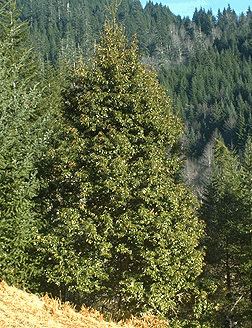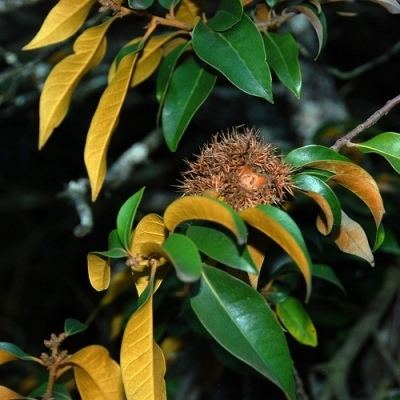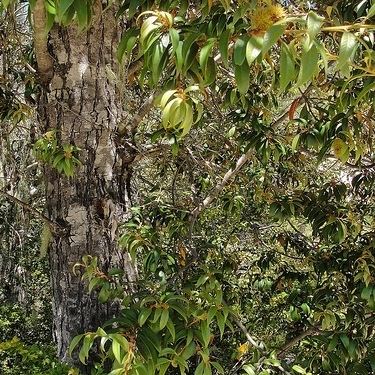Rank Species | ||
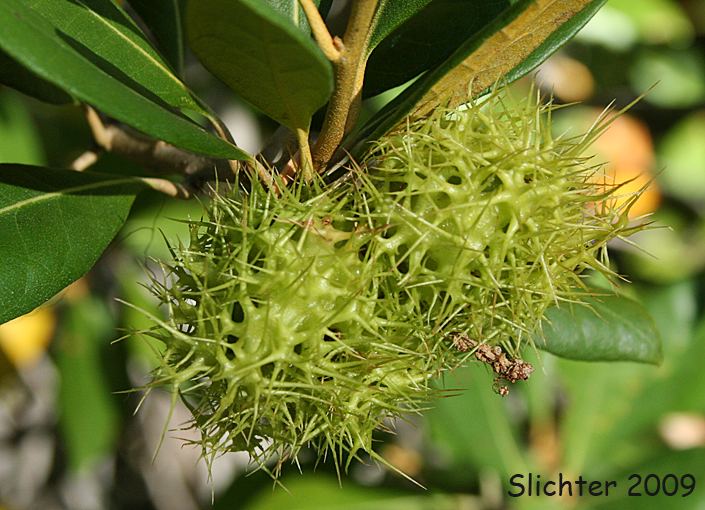 | ||
Similar Chinquapin, Notholithocarpus densiflorus, Quercus chrysolepis, Quercus kelloggii, Alnus rhombifolia | ||
Chrysolepis chrysophylla is a species of flowering plant in the beech family known by the common names golden chinquapin, giant chinquapin, and western chinquapin. It is native to the Pacific coast of the United States from west-central Washington to central California.
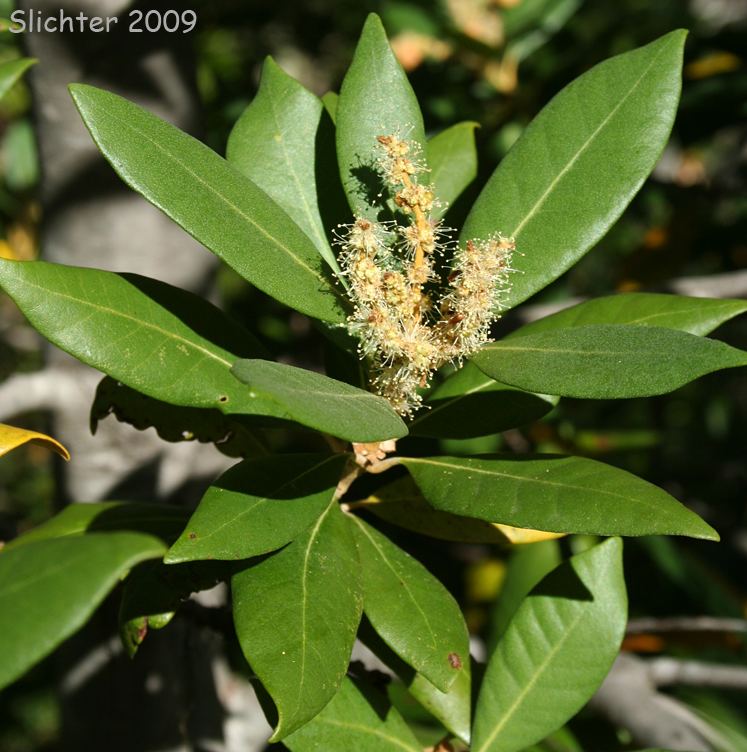
This plant is a shrub or tree. Shrubby forms of the plant occur in dry areas, higher elevations, and poor soils. The plant grows into a tree up to 45 metres (148 ft) tall in cooler, moister areas such as valley bottoms and north-facing slopes, and foggy and rainy areas. The bark is thin and smooth on young trunks; on older specimens it becomes thicker and platy. The open crown of the large tree is conical in shape. The leathery evergreen leaves are dark green on the upper sides and golden underneath. The leaves are folded upward along the midrib. The species is monoecious, with individuals bearing both male and female flowers. White male flowers are borne in the leaf axils, and a cluster of female flowers is borne beneath them. A spiny bur contains one to three nuts. There is generally a burl at the base of the tree. The tree may sprout from adventitious buds in the burl, a form of vegetative reproduction that is more common in dry areas where it is less likely that seedlings would become established. The tree may live up to 500 years.
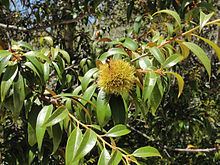
This plant grows in climax forests dominated by redwood, white fir, western hemlock, and Shasta red fir, or mixes of tree types. It may be an understory shrub, or it may codominate the canopy as a tree. Habitat types where the tree may be found include coastal forests, woodlands, and chaparral. In the western Cascade Mountains it grows in western hemlock forests. In the southern Cascades it grows at higher elevations but takes on a smaller, shrubbier form.
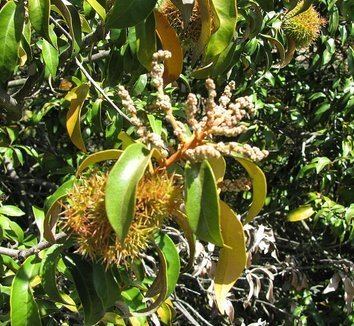
The tree has a heavy, strong wood which is light brown with a pinkish tinge. It rarely grows in large enough quantities to serve commercial purposes. The nut is edible, having a flavor similar to the hazelnut or filbert.
